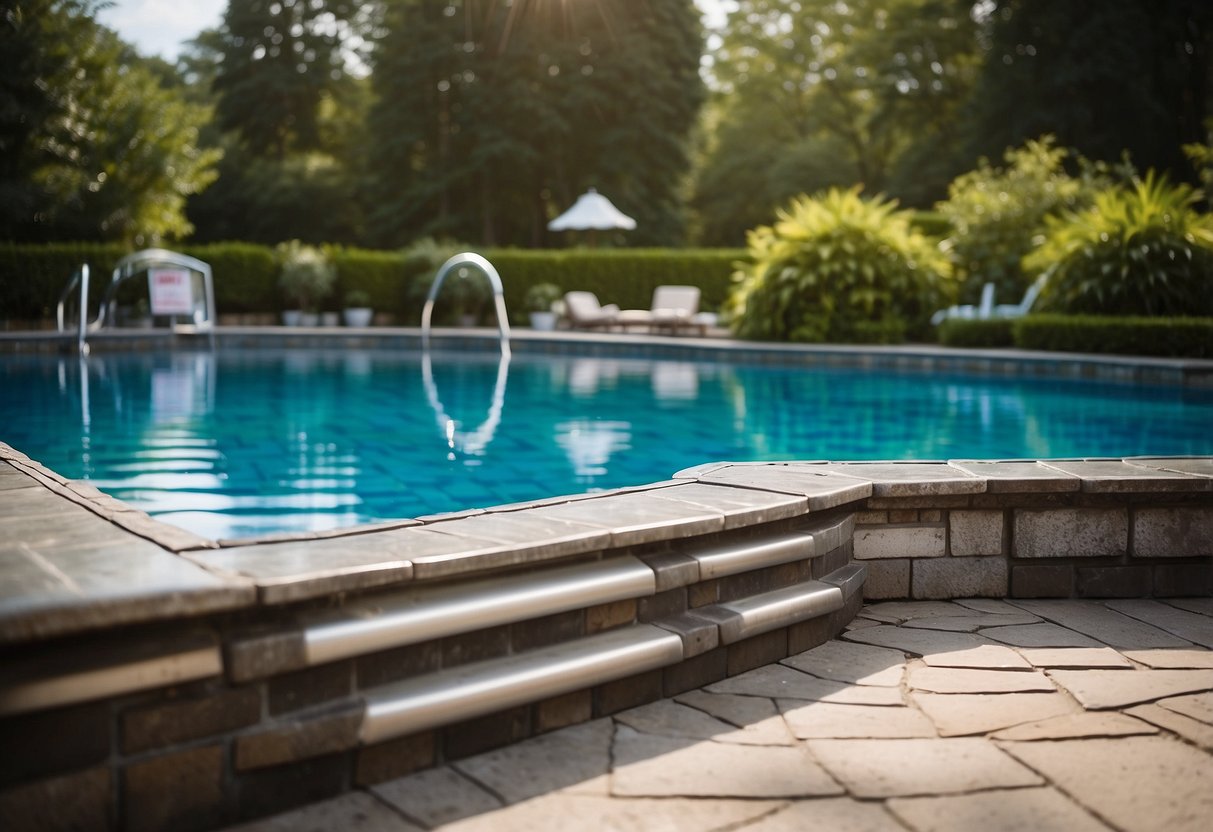When it comes to building your dream in-ground pool, understanding the different types of pools and their maintenance is key. The construction process and long-term care will vary depending on whether you choose a concrete, fiberglass, or vinyl liner pool. Each type has its own pros and cons, and knowing these will help you make an informed decision.

Concrete pools are known for their durability and flexibility in design, but they require regular maintenance to prevent algae buildup and cracking. Fiberglass pools, on the other hand, are easier to install and maintain, though they offer less customization. Vinyl liner pools are the most budget-friendly option, but their liners need replacing every 5-9 years.
Maintaining an in-ground pool involves consistent cleaning, checking the chemical balance, and addressing any repairs promptly. Proper care will ensure your pool remains a safe and enjoyable place for years to come.
Maintenance Fundamentals for In-Ground Pools

Proper maintenance is essential for keeping an in-ground pool clean and ensuring it functions correctly. Attention to water quality and chemistry, cleaning methods, and routine care schedules will help maintain a safe and enjoyable swimming environment.
Water Quality and Chemistry
Maintaining the right balance of chemicals in the pool is crucial. Regularly test pH levels, chlorine levels, alkalinity, and calcium hardness with a pool test kit. The ideal pH range is 7.4 to 7.6. Keep chlorine levels between 1 and 3 ppm to sanitize the water. Alkalinity should be between 80 and 120 ppm, while calcium hardness should range from 200 to 400 ppm. Cyanuric acid helps stabilize chlorine but should not exceed 50 ppm.
Shock treatment involves adding a high dose of chlorine to kill bacteria and algae. Do this weekly or after heavy pool use. Regularly check sanitizer levels and adjust as needed to prevent contamination. Monitoring water chemistry ensures the water remains clear and safe for swimming.
Cleaning and Filtration
Effective cleaning and filtration are key to a healthy pool. Brushing the pool walls and floor prevents algae buildup. Use a pool brush designed for your pool type (concrete, vinyl, or fiberglass). Skimming removes debris from the water surface daily. Vacuuming the pool floor weekly helps remove dirt and debris that brushing may miss.
A good filter system (sand, cartridge, or DE filter) is essential. Run the pump for at least 8-12 hours daily to ensure proper water circulation and filtration. Clean or backwash the filter regularly to maintain its efficiency. Use an automatic pool cleaner or robotic cleaner to ease the cleaning process.
Routine Care and Scheduled Maintenance
A systematic pool care routine keeps the pool running smoothly. Check the water level regularly; it should be halfway up the skimmer opening. Too low or too high levels can affect the skimmer and pump operation. Inspect the pool cleaner, skimmer, and pump baskets weekly for debris and clean them to prevent blockages.
Scheduled maintenance includes annual inspections of the pool’s infrastructure, such as the liner or plaster, and the pool equipment like pumps, heaters, and filters. Hiring a professional for an annual service can identify and fix minor issues before they become major problems. Regular upkeep ensures a long-lasting and enjoyable pool experience.
Long-Term Care and Damage Prevention

Long-term care of an in-ground pool is key for preventing damage and ensuring it stays clean and safe. Regular checks and maintenance will save time and expense in the future.
Protecting Your Pool’s Structure and Surface
Maintaining the pool’s structure and surface involves routine checks and repairs. The pool liner can suffer from punctures and fading over time. Inspecting the liner regularly can catch minor issues before they become more severe, possibly requiring liner replacements.
Using a pool brush and vacuum helps remove debris and prevent algae and stains, which can damage the liner. For concrete pools, occasional resurfacing and an acid wash may be needed to keep the surface smooth and looking new. A good pool cover protects the pool from debris and harsh weather.
Equipment Inspection and Upkeep
One must regularly inspect and maintain the pool’s equipment to avoid costly repairs. The pool pump, filter, and skimmer baskets need regular checks to ensure they are working efficiently. Regular cleaning of the pool filter—whether it’s sand, cartridge, or DE—keeps the water clean and clear.
Skimmers should be checked and cleaned frequently to avoid blockages. Using a vacuum can help pick up debris that the skimmers miss. Keeping an eye on the electricity usage of the pool’s equipment helps in managing costs and ensures efficient operation.
Weatherproofing and Seasonal Considerations
Weather changes can affect the pool. Seasonal weatherproofing is essential for long-term care. In colder climates, winterizing the pool, including lowering the water level and adding antifreeze, helps prevent damage. For areas with heavy rains, ensuring that the drainage is adequate prevents overflow and damage to the structure.
During hot seasons, add an algaecide regularly to prevent algae growth. Flocculants can be used to clear cloudy water. Pool covers not only keep debris out but also help in maintaining water balance. With proper low-maintenance techniques, the pool can remain in excellent condition year-round.

